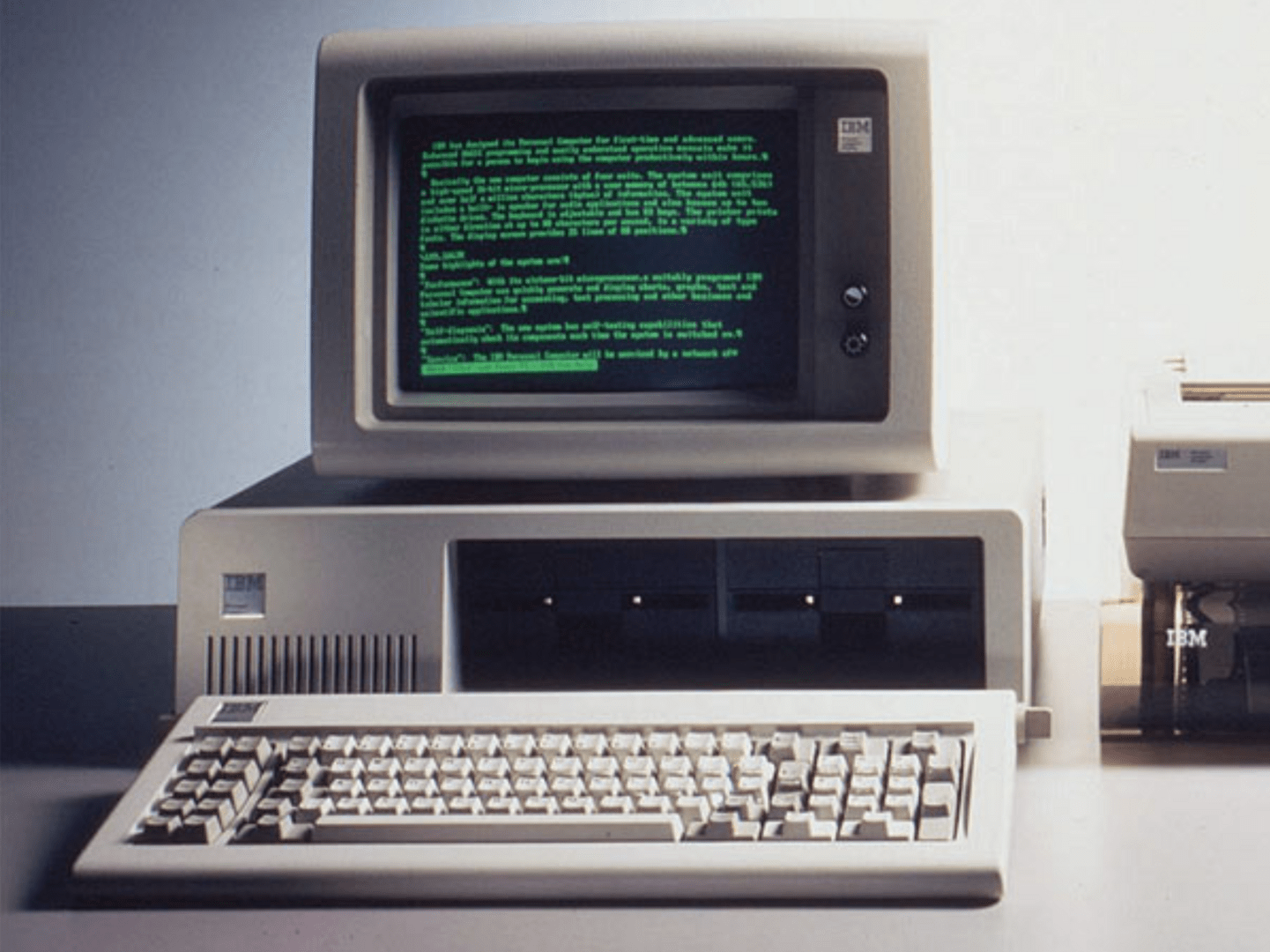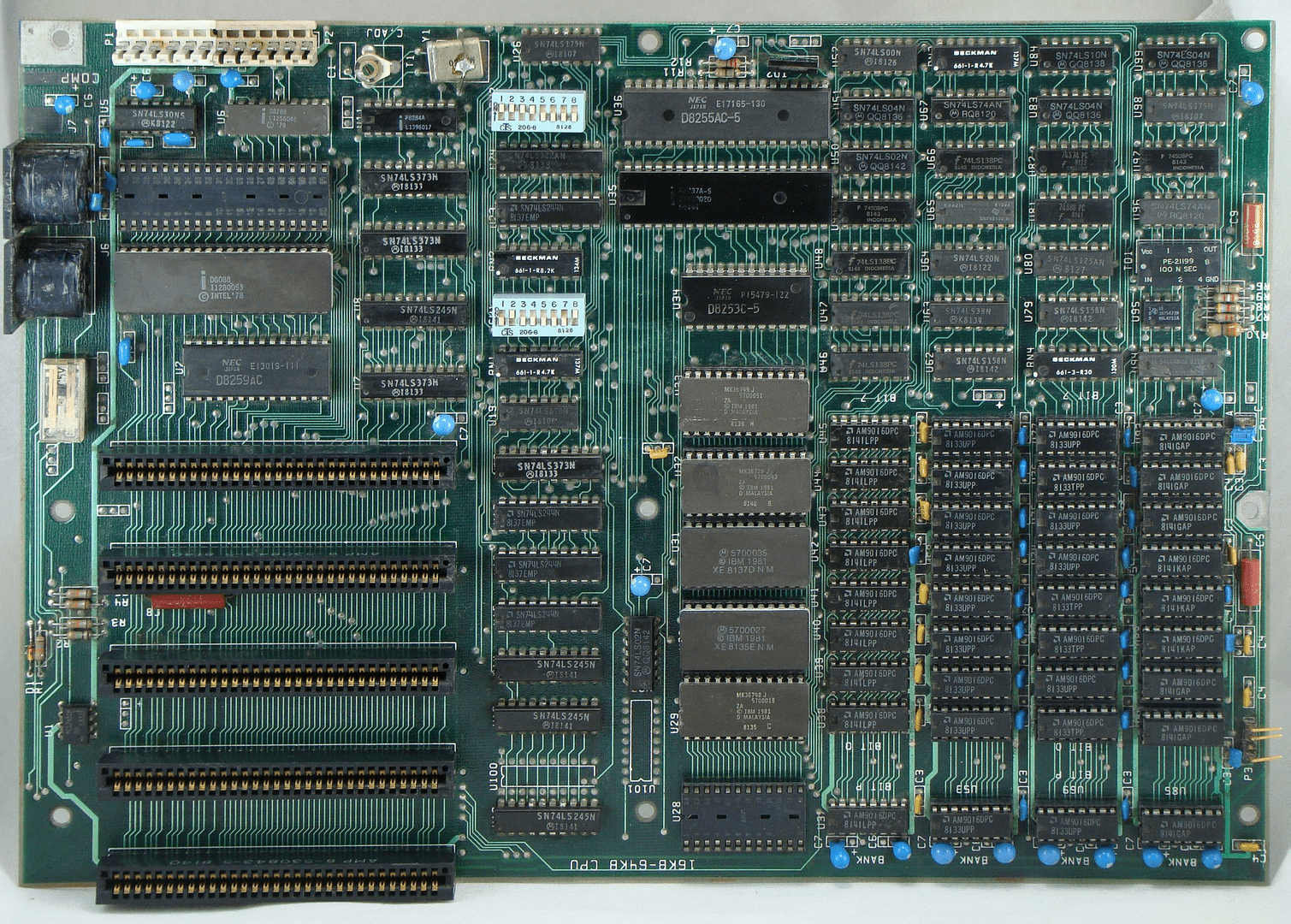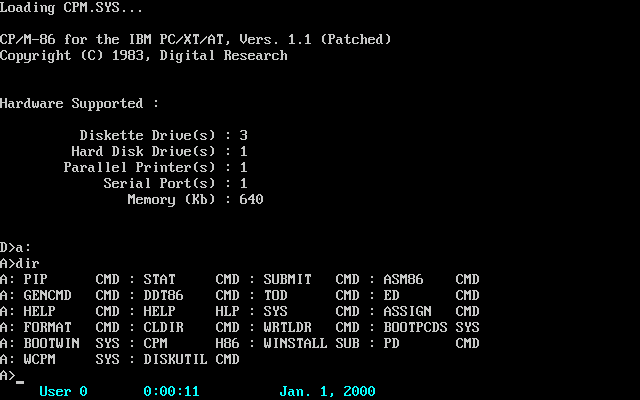In 1981, IBM released the IBM Personal Computer Model 5150, its first computer with an x86 processor, thereby defining the standards that were valid from then on for computer systems in the office and everyday life – even if home users were still using alternatives for the time being.
Table of contents
- 1 C: B_retro Ausgabe_87 Der_erste_IBM_PC
- Inexpensive home computers dominate the market
- The first IBM personal computer appeared in 1981
- Windows PCs replaced the IBM PC in 1990
- C:B_retroFeedback
- Feedback is always welcome
- C: B_retro Review
- An overview of the last fifteen issues
C: B_retro Ausgabe_87 Der_erste_IBM_PC
Even though home users in particular still used traditional home computers in the early 1980s, such as the Commodore VIC-20 and later its successor Commodore 64 with its 8-bit microprocessors such as the MOS 6502, including the Amiga 400 and 800 belonged, the first IBM personal computer set the course for the future of computer systems.
Cheap home computers dominate the market
Between 1976 and 1980 the Apple I and especially its successor, the Apple II, the first real personal computer for many, as well as the Commodore PET 2001 and the Sinclair ZX80/ZX81 were created the new class of home computers.
The typical “home computers” should primarily serve entertainment purposes and programming by and by home users. The Atari 400 and Atari 800 as well as the TI-99/4 and the Tandy TRS-80 were also positioned in this group at the time.
Compared to other common “computers” At that time, home computers were in the middle to lower price range. Below are the well-known home computers of this era and their RRP at the time:
Atari 800 1,000 US dollars
549 US dollars Commodore PET 2001 $ 800 Commodore VIC-20 $ 300 Commodore 64 MOS 6510 8-bit and 1.02 MHz $ 600 Tandy TRS-80 Zilog Z80 8-bit and 1.77 MHz $ 700 Sinclair ZX81 $ 150 Texas Instruments TI-99/4 TMS9900 16-bit, 3 MHz $ 1,150 Texas Instruments TI-99/4A $ 600
Texas Instruments, the world's leading semiconductor manufacturer at the beginning of the 1980s, was technically in the lead with the TI-99/4A.
The computer housed a 16-bit main processor, which was very powerful for the time, 16 kilobytes of RAM and 26 kilobytes of ROM as well as special modules for image and sound output using four sound and noise generators.
With around 3 million units sold, the TI-99/4A temporarily took over the market leadership in the device class of home computers at the end of 1982.
 The TI99/4A was the reference with 16-bit in 1982 (Image: Musée Bolo, CC BY-SA 2.0)
The TI99/4A was the reference with 16-bit in 1982 (Image: Musée Bolo, CC BY-SA 2.0) The Sinclair ZX81 with the Zilog Z80 made home computers mass-produced in 1981 at a competitive price of 150 US dollars, and from 1982 the Commodore 64 should quickly spread in many private households and offices.
Between 1984 and 1985 the Macintosh and the Amiga 1000 also entered the competitive ring for home computers.
The first IBM Personal Computer appeared in 1981
More than 40 years ago, on August 12, 1981, the 5150 model was the first IBM personal computer and thus the original model of today's IBM-compatible computers.
 IBM Personal Computer 5150 (Image: IBM)
IBM Personal Computer 5150 (Image: IBM) For the first time ever, IBM trusted a processor based on the x86 architecture, after the two predecessors, the IBM System/23 and the IBM 5120, had each relied on a simpler 8-bit microprocessor of the Intel 8085 type and an IBM PALM processor . The first IBM PC was based on an Intel 8088 and had the following specifications:
- Intel 8088 with 16-bit and 4.77 MHz
- 16 kilobytes to 256 kilobytes of RAM
- IBM 5150 monochrome display with 720 × 350 pixels
- IBM monochrome display Adapter
- IBM Color Graphics Adapter
- 5.25 “floppy disk drive
- IBM Basic/PC DOS
- US $ 1,565
The IBM-PC 5150 could be equipped with up to 640 kilobytes of RAM using expansion cards from third-party manufacturers.
 Motherboard of an IBM PC (” Model 5150 “) (Image: German, CC BY-SA 3.0)
Motherboard of an IBM PC (” Model 5150 “) (Image: German, CC BY-SA 3.0) < p class = "p text-width">The first IBM PC at that time did not have a hard drive and was only able to provide two 5.25-inch floppy disk drives with either 160 kilobytes (“single sided”) or 320 kilobytes (“double sided”) storage space on the corresponding storage media could be equipped.
With the IBM PC, IBM set an informal, worldwide industrial standard and defined the device class of IBM-compatible PCs that is still current today, especially those from the middle of the 1980s.
The IBM personal computer defined and established its own class, so that the numerous replicas and continuations of the IBM PC by other companies were also referred to as IBM PC-compatible computers.
The model 5150 was built unchanged until April 1987, although the successor was presented as early as 1983 with the IBM Personal Computer XT (“Model 5160”) and in 1984 with the IBM Personal Computer/AT, the first IBM PC with Intel 80286 was presented.
With the introduction of new processors from the 286 and all later models with a word length of 32-bit, Intel integrated a virtual 8086 on the processor so that full x86 compatibility could still be guaranteed.
In addition to an IBM Basic, PC DOS 1.0 and 1.1 and later MS-DOS were used as the operating system. Windows 1.0 also found its way quickly to IBM-compatible PCs from November 1985, but required at least 256 kilobytes of RAM, a hard disk and MS-DOS 2.0.
 The first” desktop “from Windows 1.01 (Image: Microsoft)
The first” desktop “from Windows 1.01 (Image: Microsoft) Microsoft Windows 1.0 reached the first retailers on November 21, 1985 – already as Windows 1.01 – on a total of five 5.25-inch floppy disks and had the following system requirements:
- Intel 8086 or Intel 8088
- At least 256 KB RAM
- A hard disk and a floppy disk drive
- A graphics card with support for CGA or EGA
- MS-DOS operating system from version 2.0 or higher
Using a null modem cable and the “Terminal” application under Windows 1.x it was already possible to communicate with the IBM PC or IBM compatible PC and to exchange data with one another.
In addition to the different DOS variants and the first Windows versions, the operating system CP/M (“Control Program for Microcomputers”) from Digital Research ran on the IBM PC and its Derivatives.
 CPM-86 from Digital Research on an IBM -PC (Image: Digital Research, public domain)
CPM-86 from Digital Research on an IBM -PC (Image: Digital Research, public domain) Ultimately, the success of the Windows brand should soon overtake the IBM PC, which set the standards that would apply in the future.
Windows PCs replaced the IBM PC from 1990 onwards
With the publication of Microsoft Windows 3.0 in May 1990, the “Windows PC” and the “Windows-compatible personal computer” gradually replaced the IBM PC as a “brand” and applicable standards for computer systems and made the name “IBM- PC “has become a rather historical term.
Already with the introduction of Windows 95, which celebrated its 25th birthday in August 2020, both the specialist literature and the media spoke primarily from “Windows compatibility” and the “Windows PC”.
Nevertheless, today's PCs based on x86 processors from Intel or AMD are largely compatible with their ancestor, the IBM PC model 5150, even if the attribute and trademark “IBM-compatible” has not been advertised for a long time.
In order to be one hundred percent “IBM-compatible” even today, the EFI must provide a corresponding BIOS compatibility in order to enable a compatible DOS operating system to be started and the computer to use it exactly like an IBM PC from 1981.
The YouTube channel “Modern Classic” has summarized the history of the first IBM Personal Computer Model 5150 in a video that is well worth seeing.
The YouTuber “ctrl-alt-rees” presents a model 5150, which is equipped with 7.16 MHz and 640 kilobytes as well as Ethernet and EGA graphics card, which is also very worth seeing.
< figure class = "text-asset text-width video-figure">
C: B_retro Feedback
Feedback is always welcome
The editorial team welcomes constructive criticism, praise, but also suggestions to be able to align the series even more closely to the wishes of the readership in the future. With this reading material in their luggage, the editors wish you a relaxing Sunday.
C: B_retro Review
The last fifteen issues in the overview
The last 15 topics of the previous editions of C: B_retro :
- C: B_retro Edition_86 : Microsoft Windows 96
- C: B_retro Issue_85 : AMD Phenom and Opteron (“K10”)
- C: B_retro Issue_84 : FIFA Soccer and other football pioneers
- C: B_retro Issue_83 : Hercules 3D Prophet 4500 with PowerVR Kyro II
- C: B_retro Issue_82 : ComputerBase builds the perfect Voodoo-2-Retro-PC
- C : B_retro Edition_81 : The first graphics cards of the ComputerBase community
- C: B_retro Edition_80 : The early history of the graphics card
- C: B_retro Edition_79 : Nokia Communicator
- C: B_retro Ausgabe_78 : The first Microsoft Xbox
- C: B_retro Ausgabe_77 : The Sinclair ZX81
- C: B_retro Issue_76 : The perfect gaming PC for 1999
- C: B_retro Issue_75 : The first MacBook Pro with Intel Core Duo
- C: B_retro Issue_74 : Star Wars: Knights of the Old Republic
- C: B_retro Issue_72 : A look at the history of PC benchmarks
- C: B_retro Issue_71 : The Nintendo GameCube
Even more content of this kind and many more reports and anecdotes can be found in the retro corner of the ComputerBase forum as well as in subject areas C: B_retro and Retro.